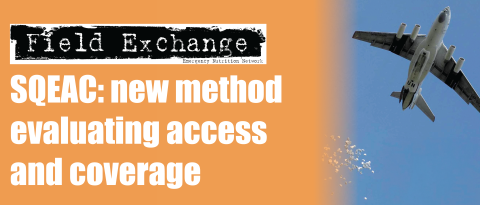SC UK’s experiences with Central Emergency Response Funds (CERF)
Summary of evaluation report1
In May 2007, Save the Children UK (SC UK) surveyed all of its field programmes operating in countries where Central Emergency Response Funds (CERF) had been granted over the year. This was a follow up to a published position paper on CERF in January 2007, which argued that unless non-governmental organisations (NGOs) achieve direct access to CERF funding, the CERF would never achieve its full potential. The January paper highlighted several concerns, including the speed of forward disbursements, lack of transparency, problems in United Nations (UN) /NGO relations in the field and poor communication.
Of the 37 countries that had received CERF funding in 2007 at the time of the survey, SC UK was operational in seventeen. Of those 17, SC UK had successfully applied for grants in two countries - Mozambique and Liberia. The Somalia response team also benefited from CERF, through CERF funded UN cargo flights that assisted SC UK relief programming in Hiran region.
Currently, each UN agency requires using its own sub-agreement form with NGOs. Also, overhead costs still need to be negotiated on a case-by-case basis that takes time. Experience in Mozambique revealed that CERF did not provide the critical jump-start funding for either UN agencies or NGOs in the wake of the flooding in February 2007. According to the Inter-Agency real-time evaluation of the response to the February 2007 floods and cyclone in Mozambique, there would have been considerable delays in assistance had UN agencies and NGOs not had their own seed money to begin operating right away. The report also states that "the most difficult area of the CERF was the application for funds for NGOs via the CERF".
According to the SC UK survey it is problematic that UN agencies do not adequately keep track of when and how much CERF funding is passed through to NGOs. Without these data, it is impossible to gauge the impact of CERF funding on beneficiaries. To its credit, the CERF Secretariat has introduced new reporting requirements which should improve the transparency. The UN and the International Organisation for Migration (IOM) are now required to submit an annual report, including lessons learned on accessing funds from the CERF and analysing its impact. The Humanitarian/Resident Coordinator (HC/RC) annual reports are meant to document forward disbursements to NGOs.
Another finding from the survey is that the relationship between the UN agencies and NGOs in the field varies greatly. Mutual suspicion and a lack of communication can prevail in certain contexts, and a lack of transparency feeds this problem. SC UK found that there was confusion (and scepticism) amongst Country Directors about the UN agencies' motivations for applying for CERF funding. There was a perception that they use the CERF to 'top up' their own budget shortfalls, which is not the intended use of CERF. In two countries, SC UK Country Directors made clear how frustrated they were at being excluded from the decision-making processes. In both cases, they were assured they would be consulted next time.
Several of the SC UK programmes were simply unaware that CERF funding had been granted to the countries in which they work. This points to not only a lack of communication but also to the state of UNNGO relations.
SC UK, Oxfam and representatives from UN agencies attended a CERF Training of Trainers in April 2007, which helped finance staff understand better the mechanisms, limitations and opportunities with the CERF. Trainings from the Humanitarian Liaison Support Unit in the UN Office for the Coordination of Humanitarian Affairs (OCHA) have also helped the wider NGO community - particularly field based staff - know more about the CERF.
SC UK makes a number of recommendations regarding the CERF:
- The CERF Secretariat should establish pre-approval procedures or standardised Letters of Understanding (LoU) between the CERF Secretariat and NGOs with proven competency. Alternatively, a standardised global LoU would also be useful between any UN agencies and NGOs with proven capability.
- The CERF Secretariat and UN agencies must continue to improve the transparency of CERF funding, including regular public reporting of the speed and impact of CERF funding for humanitarian programmes on the ground. There should be clear guidelines for timing, minimum percentage of funds to NGOs and percentage of overheads.
- The CERF Secretariat should pursue a project tracking system, to track funds all the way from CERF to beneficiaries.
- The CERF Advisory Group and UN member states must hold UN agencies accountable to higher levels of transparency and speed for disbursal of funding from the CERF, in order to improve this important mechanism and better demonstrate impact for beneficiaries on the ground. A real-time evaluation of CERF's speed and transparency should be piloted.
- The Inter-Agency Standing Committee (IASC) Working Group and CERF Secretariat should navigate a way to allow NGOs with established capabilities direct access to CERF funding, in order to improve the timeliness and effectiveness of humanitarian response.
1SC UK (2007). Save the Children's Experience with CERF in 2007. May 2007. Available from http://www.scuk.org
Imported from FEX website


